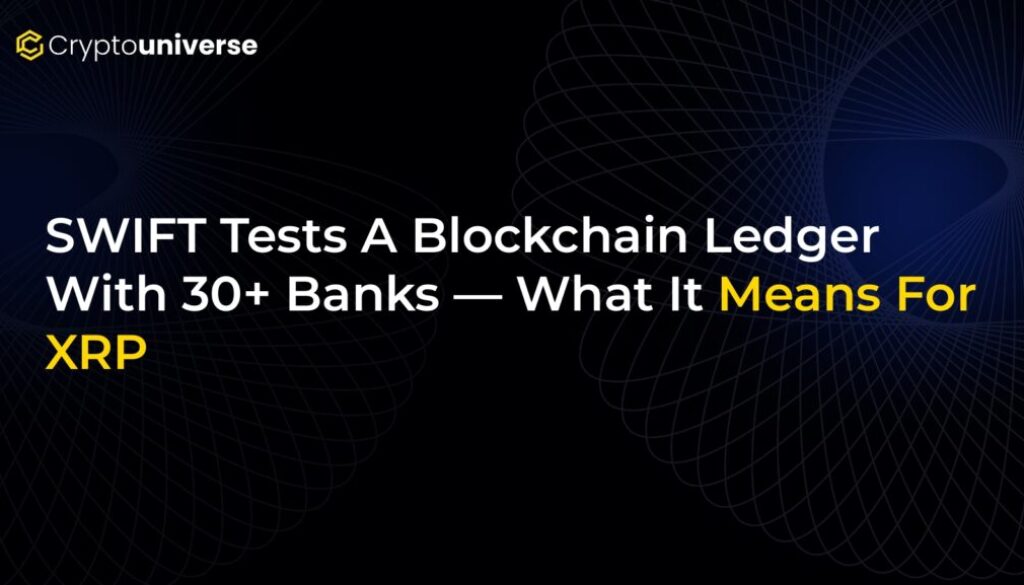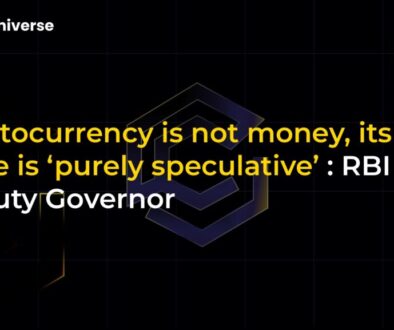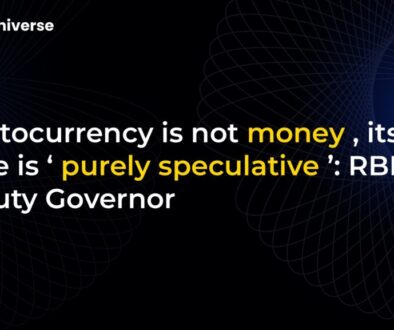SWIFT Tests A Blockchain Ledger With 30+ Banks — What It Means For XRP

The Battle for Global Payments: Is Goliath Learning David’s Tricks?
For years, the narrative in the cross-border payments world has been a classic David vs. Goliath story. In one corner, you have SWIFT, the decades-old giant that connects over 11,000 financial institutions worldwide. In the other, you have Ripple and its digital asset, XRP, a nimble challenger promising to make international transfers instant, cheap, and seamless.
The core problem Ripple aims to solve is simple: traditional international payments are notoriously slow and expensive. Sending money across borders often involves a complex web of intermediary banks, taking days to settle and racking up significant fees. XRP, with its ability to settle transactions in 3-5 seconds for a fraction of a cent, has long been seen as the heir apparent to this aging system.
But what happens when Goliath starts adopting David’s technology? The recent news that
SWIFT’s Big Blockchain Experiment
SWIFT (Society for Worldwide Interbank Financial Telecommunication) isn’t building a new system from scratch. Instead, it’s exploring how to integrate a blockchain-based shared ledger into its existing, trusted network. This isn’t a minor test run; it’s a major initiative involving over 30 of the world’s largest financial institutions.
Heavyweights participating in this proof-of-concept include:
- JPMorgan Chase
- Bank of America
- Citigroup
- Toronto-Dominion Bank
Interestingly, the initial development for this prototype is being handled by ConsenSys, a leading development firm in the Ethereum ecosystem. This suggests the initial tests will likely leverage technology built on or inspired by the Ethereum blockchain. The goal is to combine SWIFT’s unparalleled reach and trust with the speed, transparency, and efficiency of distributed ledger technology (DLT).
AJ McCray, Bank of America’s head of global payments, highlighted the key benefits, stating that a shared ledger offers the “transparency and interoperability” needed to manage payments in a 24/7 global economy.
The Million-Dollar Question: Is This a Threat to XRP?
On the surface, this looks like a direct challenge to Ripple’s entire value proposition. If SWIFT can offer its massive network a similar blockchain-powered solution, why would banks need to adopt a separate system like RippleNet? Let’s break down the implications for XRP.
The Bear Case: Direct Competition from the Top
The most significant threat is that SWIFT could effectively neutralize Ripple’s competitive edge. By integrating DLT, SWIFT could upgrade its own rails, offering faster and cheaper payments without requiring its member banks to overhaul their systems or adopt a new digital asset. With its established network and deep-rooted trust, an upgraded SWIFT would be a formidable competitor, potentially slowing or halting Ripple’s adoption among major financial players.
The Bull Case: A Massive Validation for the Technology
Conversely, this move can be seen as the ultimate validation of Ripple’s vision. For years, Ripple has argued that blockchain is the future of finance. SWIFT, by launching this project, is essentially agreeing. This industry-wide acceptance could create a larger market for DLT-based payment solutions.
Furthermore, Ripple has a significant head start. The XRP Ledger (XRPL) was purpose-built for payments, boasting years of operational history, speed, and low costs. SWIFT is just beginning its conceptual testing with a general-purpose blockchain technology. It’s also been rumored that SWIFT has explored using the XRPL in the past, and this new multi-pronged approach doesn’t rule out future collaborations.
A Future of Coexistence, Not Conquest
The most likely outcome isn’t a winner-take-all scenario. The future of global finance will likely be interoperable, with different systems serving different needs. SWIFT might evolve into a “network of networks,” connecting various ledgers and payment rails, including traditional systems, an Ethereum-based layer, and potentially even the XRP Ledger.
In this scenario, XRP wouldn’t be replaced but would become one of several key technologies powering the new financial infrastructure. Its specialization in fast, low-cost settlement could make it the preferred choice for specific use cases, coexisting alongside other solutions.
The Takeaway: The Game Has Changed
SWIFT’s foray into blockchain is not an immediate death blow to XRP. The muted market reaction to the news reflects this reality. However, it unequivocally changes the competitive landscape. The narrative is no longer just about a disruptive start-up taking on a slow-moving giant.
It’s now a race to see who can best integrate this transformative technology on a global scale. While SWIFT’s move adds a powerful new competitor to the mix, it also legitimizes the entire space, potentially opening more doors than it closes. For XRP and its investors, the long game just got a lot more interesting.


